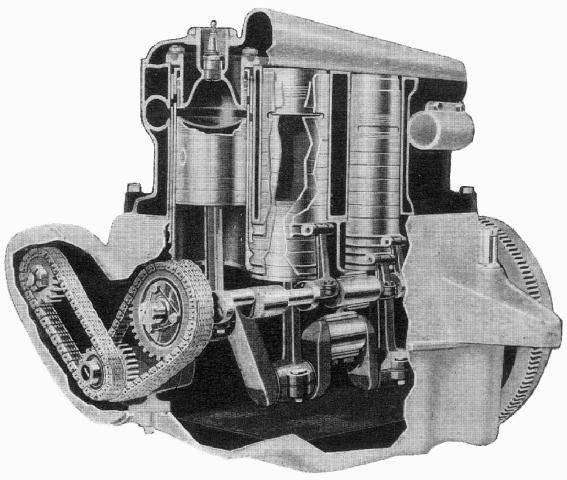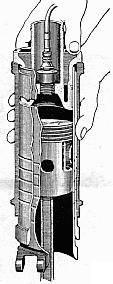Willys Overland Knight Registry
Willys Knight Engine
J.N. Willys first put his name to a vehicle
in 1909, and we see vehicles with the Willys name popping up in 1917, 1918,
1930, 1931 and 1933 onwards, but it was the Willys Knights of the 1914
- 1933 period that represented the cream of what Willys Overland could
offer. The Willys Knight engine was of course based around the basic
double sleeve engine patented by Charles Knight.

The 4 cylinder Willys Knight engine
The Knight engine has no poppet valves for inlet or exhaust like
most conventional engines. Instead it has two close fitting sleeves
that actually fit around each piston, the inner sleeve actually forming
the “bore” of the motor. Each of the sleeves move up and down via
a form of “camshaft” arrangement in much the same way that conventional
valves move up and down except that the motion is quite smooth via the
use of little “con rods” just like those on the pistons. This up
and down motion is carefully contrived so as to align circular openings
(or large holes) in the sleeves themselves at the correct points in the
four stroke cycle and function as exhaust and inlet ports.

The advantages of this are as follows;
-
No valve springs to weaken under load or heat
-
A hemispherical head for better combustion efficiency
-
An engine that could actually show measured increases in compression
and power due to carbon deposits forming on the already close fitting sleeves
-
Quiet and smooth operation
The disadvantages were;
-
Closer manufacturing tolerances and therefore machining costs
-
Royalty Fee
Interested readers should also look through the W.O.K.R.
STARTER INDEX for more information related to sleeve valve engines.



